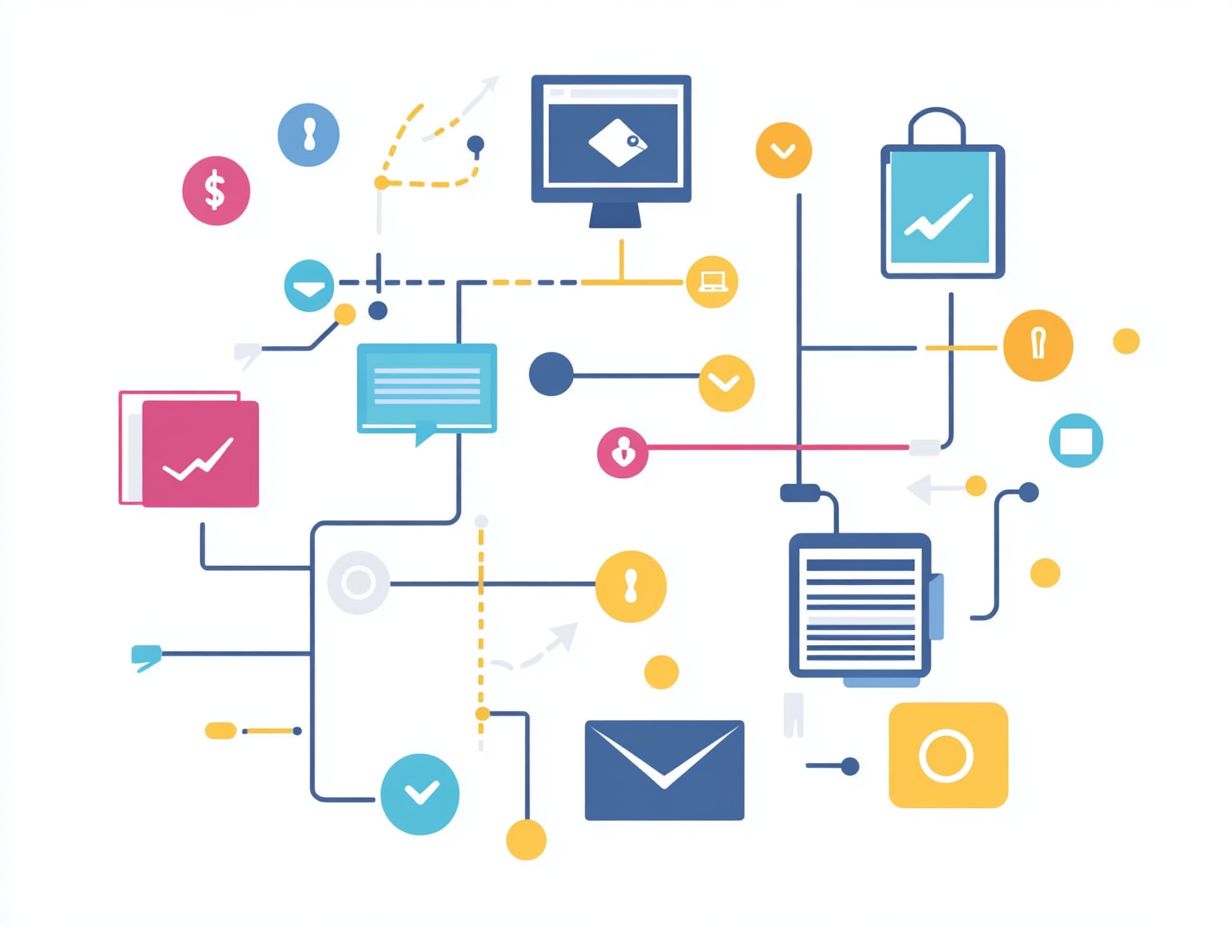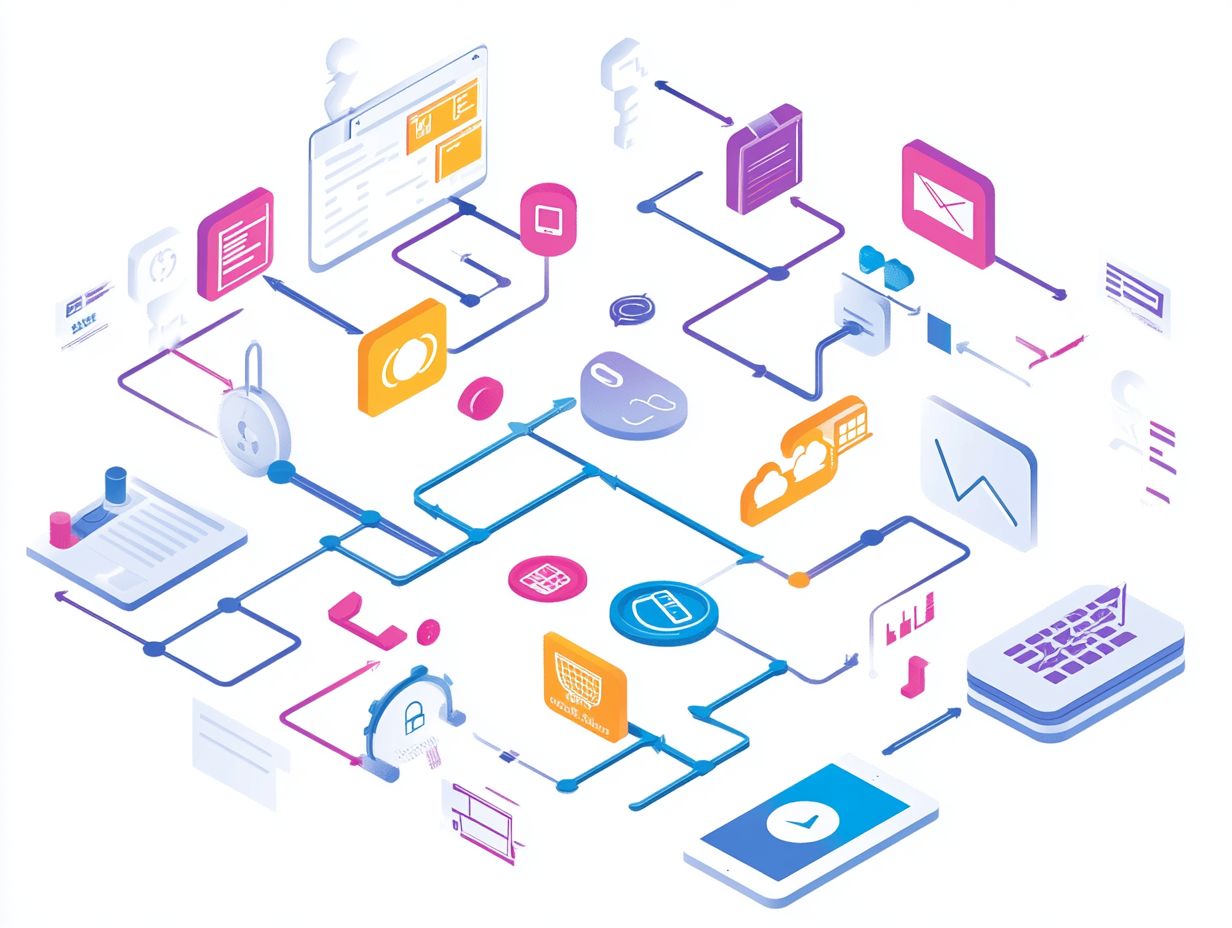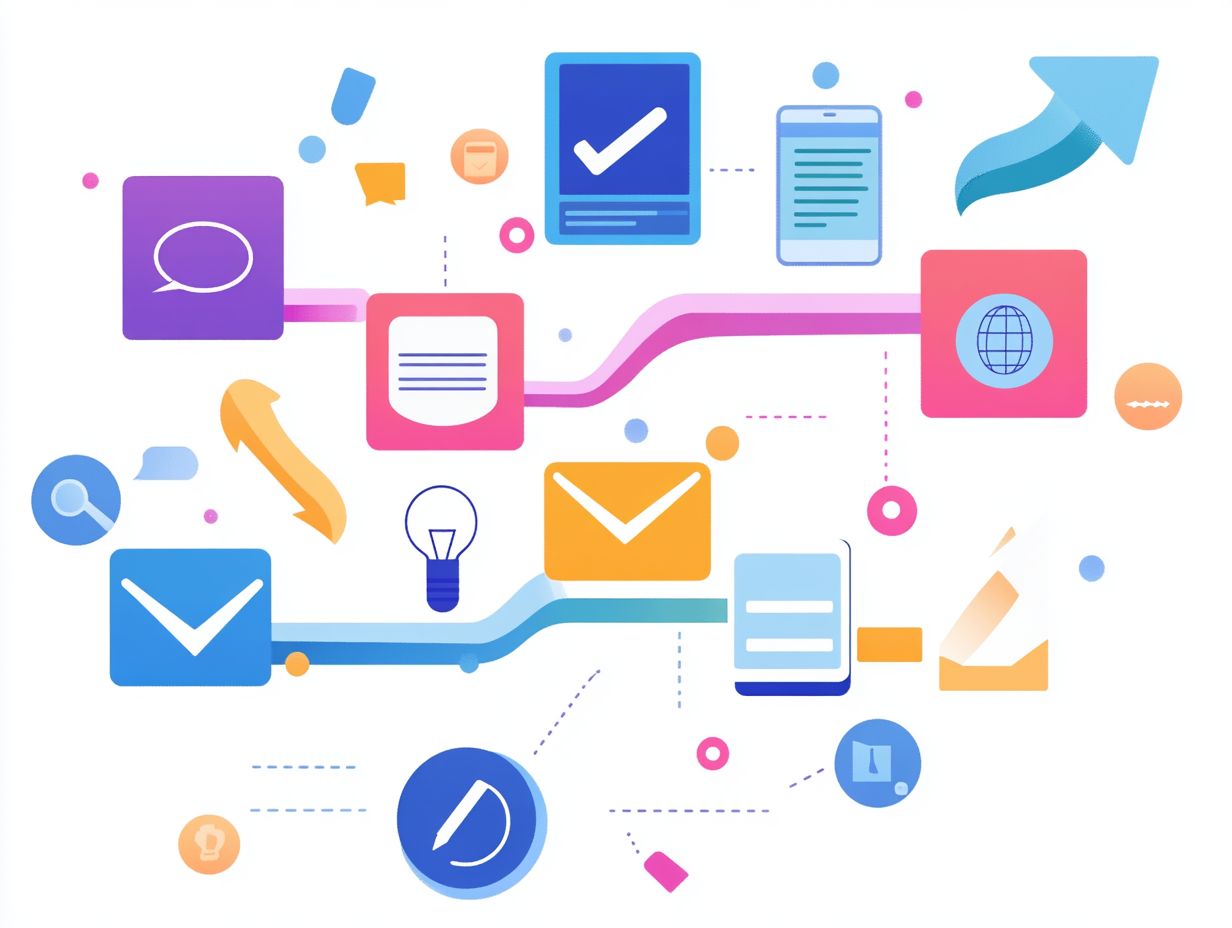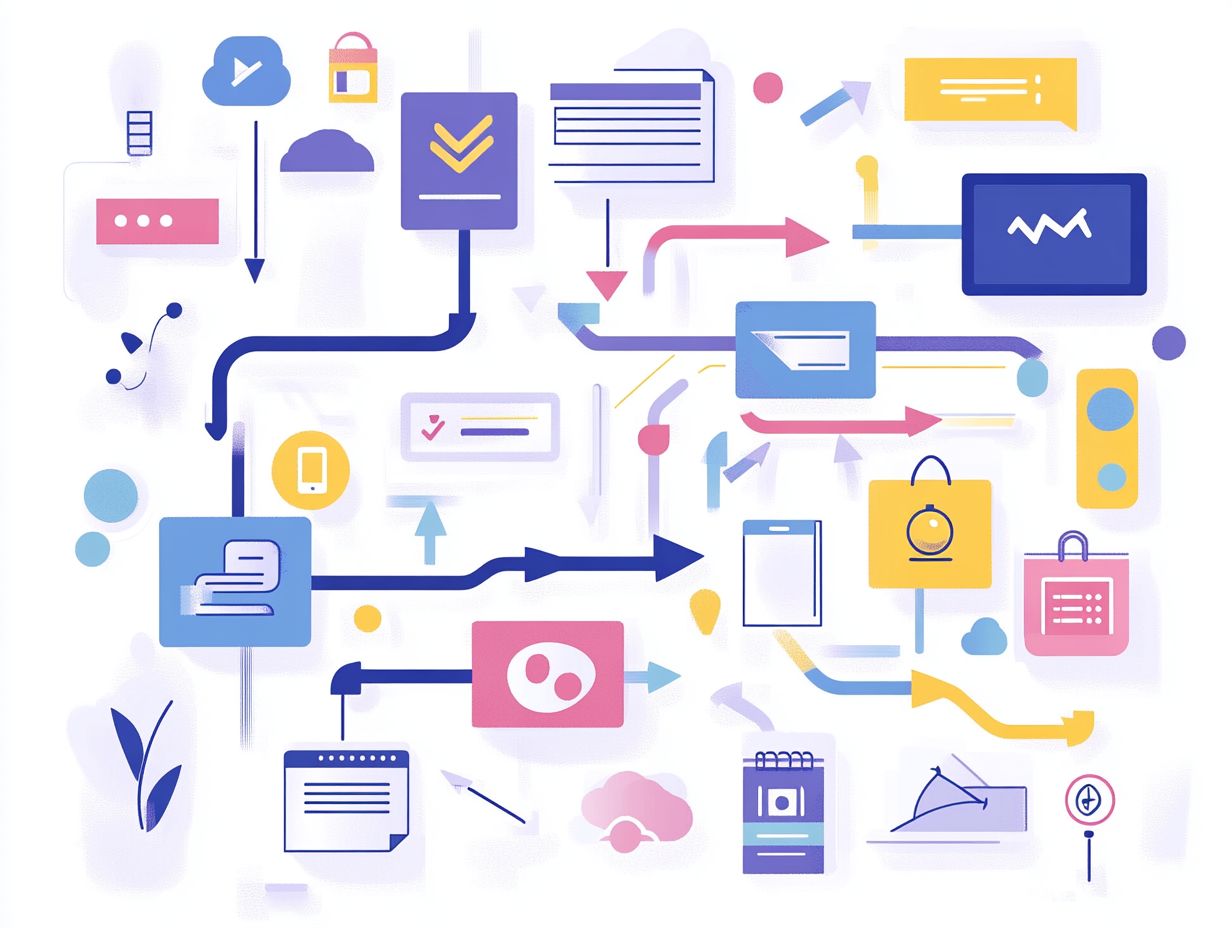Understanding the Buyer’s Journey in 2024
Let's Set Up Your Lead Generation Strategy
Fill out the form below, and our team will get in touch with you to create a tailored solution for your business.
In 2024, you’re faced with a Buyer’s Journey that is more intricate and dynamic than ever before. Grasping each stage from awareness to decision-making empowers you to forge deeper connections with your customers and stakeholders.
This article dissects the crucial stages of the Buyer’s Journey, examining the influence of technological advancements, including changes brought by online technology, and evolving consumer behaviors. It also provides you with strategies to adapt effectively.
Explore how impactful marketing and personalized experiences can elevate your brand’s success in this ever-evolving landscape!
Contents
- Key Takeaways:
- The Buyer’s Journey: An Overview
- Stages of the Buyer’s Journey
- Let's Set Up Your Lead Generation Strategy
- Changes in the Buyer’s Journey in 2024
- Let's Set Up Your Lead Generation Strategy
- How Businesses Can Adapt to the Changing Buyer’s Journey
- Let's Set Up Your Lead Generation Strategy
- Frequently Asked Questions
- What is the buyer’s journey in 2024?
- How has the buyer’s journey evolved in 2024?
- What are the stages of the buyer’s journey in 2024?
- Key Strategies for Businesses to Understand the Buyer s Journey in 2024
- What challenges do businesses face in understanding the buyer’s journey in 2024?
- How can understanding the buyer’s journey in 2024 benefit businesses?
Key Takeaways:

- By 2024, the buyer’s journey will be heavily influenced by technology, online channels, and social media, making it crucial for businesses to have a strong online presence and utilize data-driven marketing strategies.
- Consumer behavior is expected to shift in the coming years, with a greater emphasis on personalized experiences and customer satisfaction through effective engagement strategies and customer relationship management.
- The traditional stages of the buyer’s journey awareness, consideration, and decision will still hold importance. However, businesses must focus on creating a seamless and personalized experience throughout the entire buying process to attract and retain customers in 2024.
The Buyer’s Journey: An Overview
The buyer’s journey in B2B contexts illustrates the progression you undergo from awareness to decision-making, shaped by numerous factors such as your needs, challenges, and the solutions available to you. Grasping this journey is essential for businesses intent on crafting a personalized experience that resonates with you and effectively generates leads through innovative sales cycles.
As we move into 2024, the ongoing digital transformation across online platforms demands a keen focus on customer insights and market research.
This ensures businesses can adapt to your evolving buyer persona, a fictional character representing your ideal customer, and refine their engagement strategies to better connect with you.
What is the Buyer’s Journey?
The buyer’s journey is the path that potential customers navigate as they progress through various stages leading up to a purchase, typically encompassing awareness, consideration, and decision.
In the awareness stage, you begin to recognize a problem or need that demands your attention, often sparked by targeted content and valuable insights. As you move into the consideration stage, you start evaluating the available solutions, weighing the pros and cons to find the best match for your requirements.
Finally, in the decision stage, you reach a conclusion based on a thorough analysis of your options.
Understanding this journey can unlock great opportunities for your business! Customizing your content and interactions to cater to specific customer personas at each stage can greatly enhance engagement and conversion rates.
For example, a B2B company might deploy case studies during the consideration phase, showcasing real-world applications and benefits to streamline your buying process and improve customer satisfaction.
Stages of the Buyer’s Journey
The buyer’s journey unfolds in three essential stages: awareness, consideration, and decision. Each of these phases demands tailored engagement strategies designed to enhance customer satisfaction and drive conversions effectively.
Awareness Stage
In the awareness stage, you begin to recognize a problem or need and start seeking information, often turning to digital platforms and content marketing to enhance your understanding.
During this essential phase, you actively engage with various educational content types think informative blog posts, how-to videos, and infographics that help shape your perceptions and knowledge.
Let's Set Up Your Lead Generation Strategy
Fill out the form below, and our team will get in touch with you to create a tailored solution for your business.
Peer reviews, testimonials from other customers, and G2 reviews are crucial for you, as you look for validation and reassurance from credible sources.
Businesses can leverage the power of social media and targeted online ads to share educational resources and connect with you on a more authentic level, utilizing platforms like Slack and Microsoft Teams.
By focusing on delivering valuable insights, brands can effectively position themselves as trusted authorities, guiding you toward making informed decisions.
Consideration Stage

During the consideration stage, you ll evaluate various solutions available to you, drawing on customer insights and market research. This includes peer reviews to compare options and determine what aligns with your needs.
It s essential for businesses to offer valuable resources and content think detailed case studies and comprehensive comparison guides. These resources help you make informed decisions, showcasing how their offerings address specific challenges while establishing trust and credibility.
Employing personalized strategies, like tailored email campaigns and interactive content, is crucial. Leveraging CRM (Customer Relationship Management) systems allows companies to nurture you as a lead during this vital stage.
This individualized approach ensures you feel understood and supported, enhancing your overall experience as you explore different solutions. By providing relevant information, businesses can foster stronger connections with you, significantly influencing your purchasing decisions in a positive way.
Decision Stage
In the decision stage, you ve likely narrowed down your options and are laser-focused on selecting a solution that presents the best value proposition. This is particularly true for CRM, ERP systems, and integration with platforms like Slack and Microsoft Teams.
Peer reviews and testimonials are crucial; you ll seek validation from others who have faced similar choices. As you weigh factors like:
- Pricing
- Functionality
- Customer support
Considering how these elements impact your decision is essential. Recognizing this pivotal phase, businesses can improve your decision-making process by offering tailored content, such as case studies or comparison guides, that clearly outline strengths and weaknesses, ensuring transparency throughout.
Transparency in pricing is vital as it alleviates concerns and fosters trust, ultimately leading you toward a well-informed choice.
Changes in the Buyer’s Journey in 2024
In 2024, you ll notice that the buyer’s journey is undergoing remarkable transformations. These changes are fueled by technological advancements, including digital transformation and evolving consumer behaviors.
This landscape compels you to refine your strategies to stay aligned with these emerging trends, particularly in leveraging digital platforms for engagement.
Impact of Technology and Social Media
The rise of technology and social media has fundamentally transformed your buyer journey. You now have faster access to information and new channels for engagement and interaction.
Let's Set Up Your Lead Generation Strategy
Fill out the form below, and our team will get in touch with you to create a tailored solution for your business.
You re no longer confined to traditional research methods; you can leverage user-generated content, reviews from platforms like G2, and social proof to inform your decisions. As organizations adapt to this digital landscape, effectively utilizing Customer Relationship Management (CRM) systems and flexible customization features becomes essential for you.
These platforms streamline your interactions and manage data efficiently, allowing businesses to personalize communication and nurture leads at every stage of your purchasing journey.
Integrating social media insights with CRM helps companies understand your behavior better, tailoring their marketing efforts to fit your preferences. This fosters relationships that ultimately lead to increased conversions in the long run.
Shifts in Consumer Behavior
Shifts in consumer behavior, especially their growing dependence on online channels for research and recommendations, including platforms like Slack and Microsoft Teams, are fundamentally transforming the buyer’s journey.
As you navigate this landscape, you’ll notice that consumers are increasingly seeking instant access to information. Their expectations are evolving; they now desire personalized experiences crafted to their unique preferences and needs. This trend is here to stay! It’s a significant shift that you must embrace to stay competitive.
Overlooking these changes could mean missing out on valuable opportunities. Potential customers gravitate toward brands that resonate with their desires through targeted content and tailored marketing strategies.
You must refine your content marketing practices to provide relevant information, including case studies, that truly engages your audience and bolsters their loyalty. By leveraging insights based on data, you can forge more meaningful connections with your customers, ultimately enhancing the overall purchasing experience.
How Businesses Can Adapt to the Changing Buyer’s Journey

To navigate the evolving buyer’s journey successfully, you must adopt innovative marketing strategies, including lead generation tactics, that prioritize enhancing customer relationships. Emphasizing personalization and engagement will set your business apart, allowing you to connect with your audience on a deeper level and foster lasting loyalty.
Effective Marketing Strategies
Effective marketing strategies today embrace a multitude of approaches. These include lead generation tactics that engage potential buyers at every stage of their journey through carefully crafted content marketing, which emphasizes personalization for maximum engagement.
Using case studies not only showcases real-world applications of your products and services but also establishes trust and credibility with potential clients. Hosting webinars allows you to demonstrate expertise, foster engagement, and create a platform for meaningful conversations with your attendees.
Targeted campaigns, specifically designed to address the unique needs and pain points of particular segments, enhance the nurturing process. Incorporating these methodologies effectively captures the interest of leads while providing them with valuable insights. This encourages ongoing relationships and drives conversions, solidifying your presence in the market.
Personalization and Customer Experience
Personalization is essential for enhancing your customer experience. It allows you to tailor your offerings to meet the unique needs and preferences of each client. This approach cultivates deeper connections between your brand and consumers and significantly elevates customer satisfaction and loyalty.
By utilizing the strength of data analytics, you gain valuable insights into customer behavior and preferences. This enables you to craft targeted marketing campaigns and personalized recommendations. Implementing strategies like dynamic content content that changes based on user preferences segmented email campaigns, and personalized landing pages allows you to effectively address specific customer pain points.
Using customer feedback can further refine your strategies, ensuring that you continuously adapt to evolving expectations, ultimately leading to an improved buyer’s journey.
Let's Set Up Your Lead Generation Strategy
Fill out the form below, and our team will get in touch with you to create a tailored solution for your business.
Frequently Asked Questions
What is the buyer’s journey in 2024?
The buyer’s journey in 2024 refers to the process that a potential customer goes through when making a purchasing decision in the year 2024. It includes the various stages that a buyer goes through, from becoming aware of a product or service to making a final decision to purchase.
How has the buyer’s journey evolved in 2024?

In 2024, the buyer’s journey has changed a lot. Technology and consumer behavior have both played big roles.
What are the stages of the buyer’s journey in 2024?
The stages of the buyer’s journey in 2024 include:
- Awareness: The buyer recognizes a need or problem.
- Consideration: They research and compare different solutions.
- Decision: The buyer selects a specific product or service.
- Post-Purchase: They evaluate their decision.
Key Strategies for Businesses to Understand the Buyer s Journey in 2024
Businesses can understand the buyer’s journey in 2024 by conducting market research and analyzing consumer behavior data. They can also use simple tools to understand how customers make their choices. This will help businesses gain insights into their target audience’s needs and preferences.
What challenges do businesses face in understanding the buyer’s journey in 2024?
Some challenges include:
- The constantly changing landscape of technology and consumer behavior.
- Competition for customer attention.
- The need for a personalized approach to marketing and sales.
How can understanding the buyer’s journey in 2024 benefit businesses?
Grasping the buyer’s journey in 2024 is crucial. It can transform businesses by aligning their strategies with what customers truly want. This understanding allows them to tailor their marketing and sales efforts to meet specific audience needs, improve customer experience, and ultimately drive more conversions and revenue.






